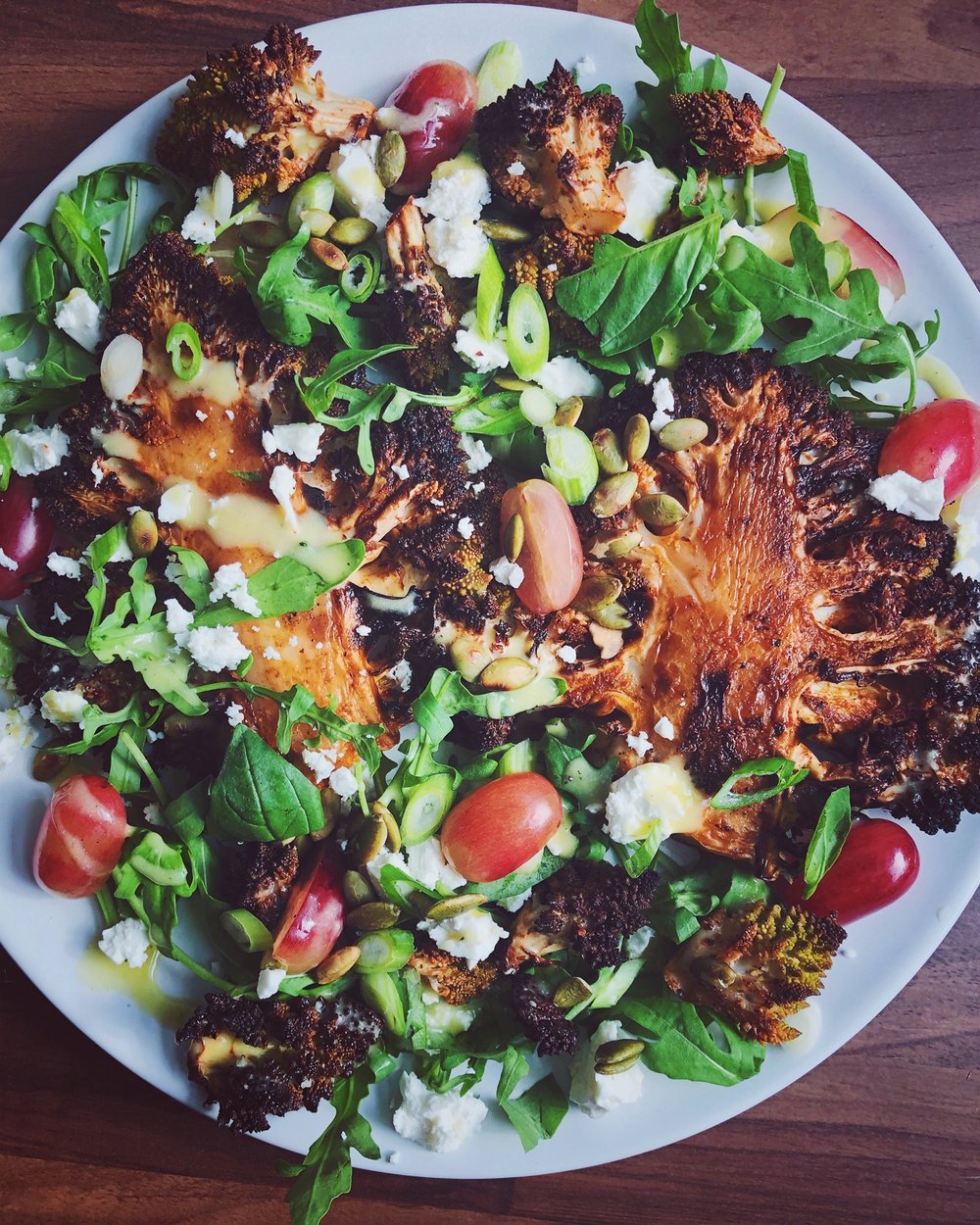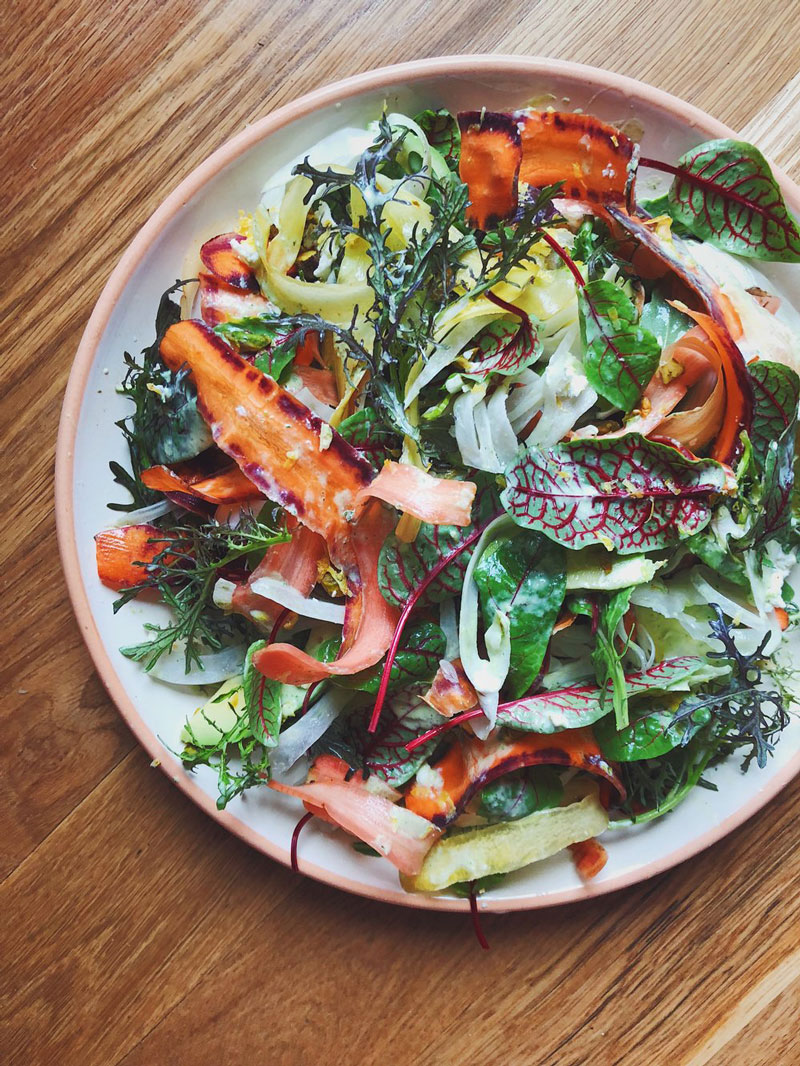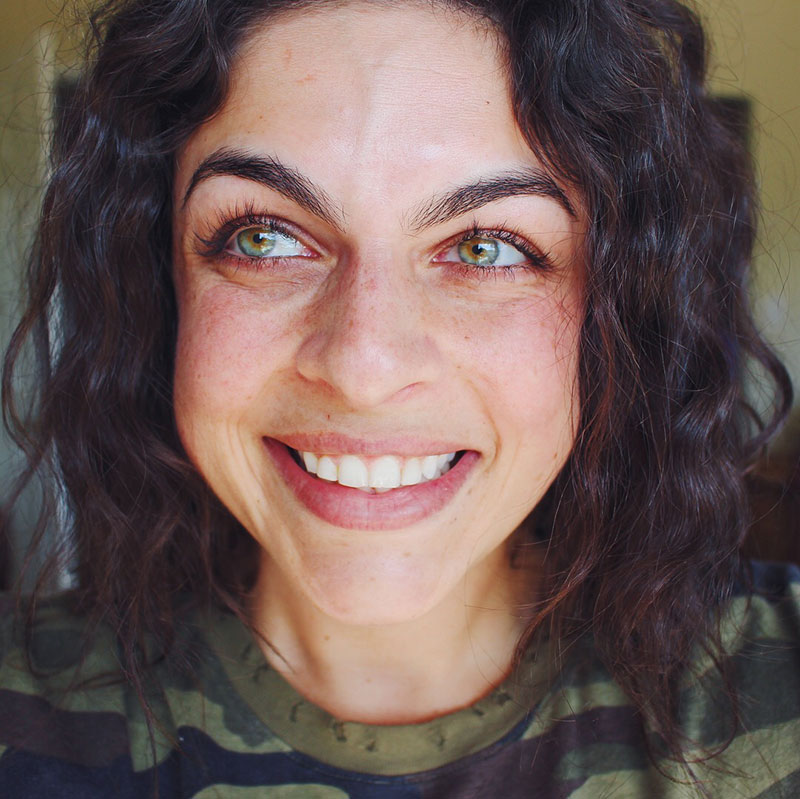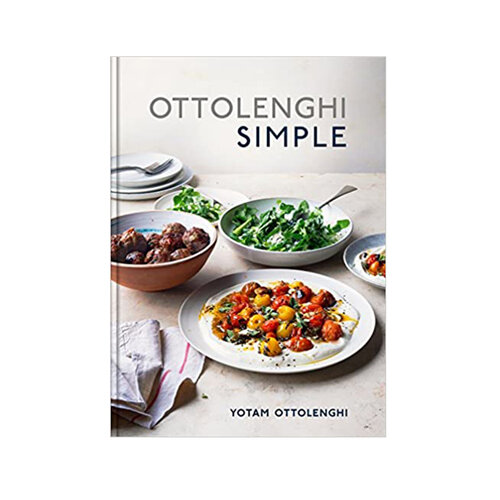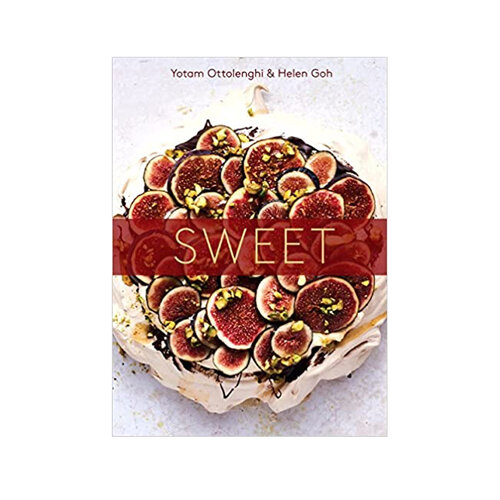A Lesson In Hospitality
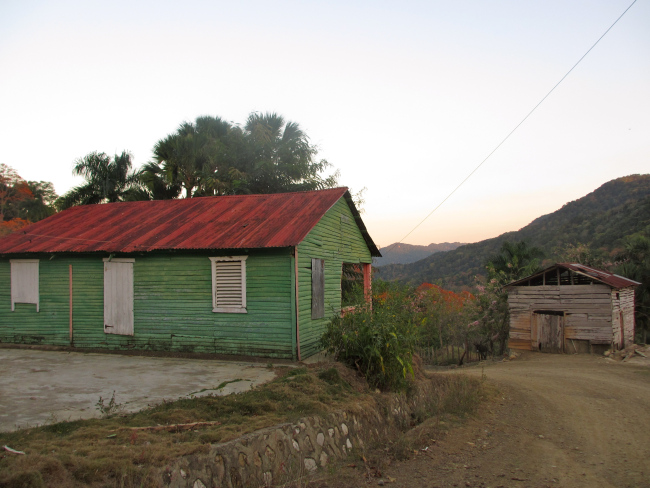
If you want something, you have to take it for yourself. Today, I was selfish. We awoke for our six am bus ride to the Jacarafe plantation in Cibao, and as soon as I heard my RA Aimee say that the bus had arrived, I wordlessly walked away from the group because I knew that if I was the first on I could secure the coveted back row for myself. I am not a morning person. I was successful in that endeavor and blissfully passed out face down on the seat for the next three hours at which point I was startled awake by a loud bang and an accompanying throttling force close to my head. We’ve been hit! There are pro’s and cons to getting the back seat, one of the cons being that I was right there when the female Asian driver slammed into our rear bumper during a traffic jam. The bus was gigantic so we didn’t even have a scrape. No information was even exchanged, a cultural difference I suppose, and the bus driver saw the hassle of going through insurance formalities to be an incomparable waste of time to heading out on our way.

In another half hour we arrived at our breakfast destination, an authentic Dominican café called Miguelina that was famed for its delicious pastries and exceptional Mangu. I had been waiting for this moment. Living in Washington Heights, a primarily Dominican neighborhood, I had the advantage of learning certain things to expect but also about certain things to search for while here. Mangu was one of the dishes I was specifically told I couldn’t miss out on! Mangu is essentially boiled plantains that are mashed and combined with onions and milk or butter. It is like the Dominican equivalent to mashed potatoes. Each of us ordered the Mangu with “everything”- fried eggs, fried salami and fried cheese. I am absolutely obsessed with the fried queso blanco here; I think I have had it at every meal! The cheese looks similar to tofu and reminds me a lot of paneer in Indian cuisine. In fact, I am finding a lot of cross-cultural food items, but more on that later.
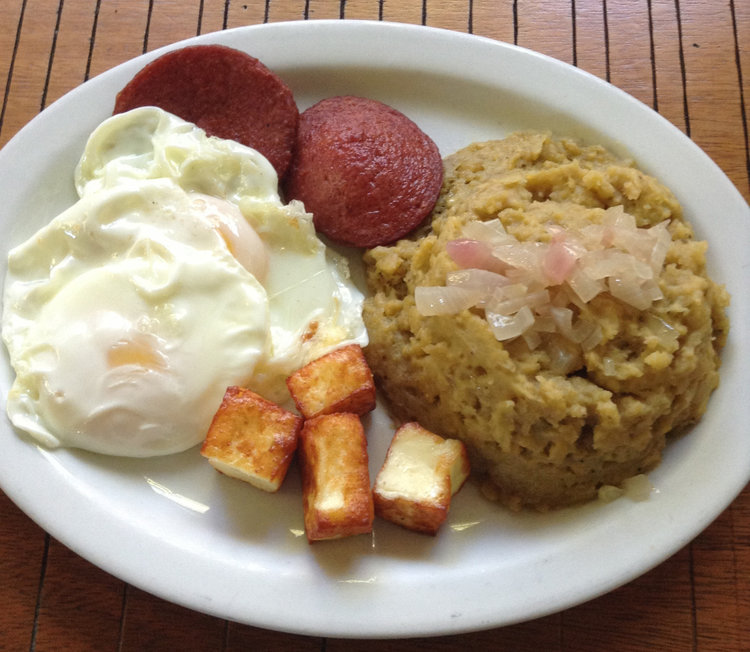
This is when I learned a very valuable Spanish phrase. I already know how to say “tengo hambre”, clearly the most important Spanish sentence (meaning I’m hungry), but this morning Aimee taught me to say “Tengo hartura”, a phrase that in essence means, “Oh my god I’m really fucking full”. We washed down our meal with a glass of passion-fruit juice and a cup of Dominican coffee before herding back into the bus for another few hours.
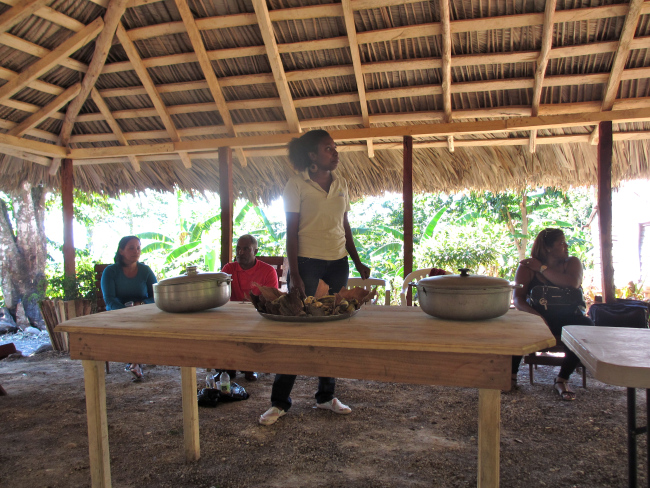
After what seemed like forever, we finally arrived at Jacarafe. The organization is a nonprofit institution that works towards sustainable development of the Cibao region in the Dominican Republic. We were greeted by the man in charge, Mario, and were then given an overview of what they do on their plantation as well as what their larger projects and partnerships are with the rest of the community. The main goals of Jacarafe are to develop sustainable agriculture within the Dominican Republic, create agricultural education programs for their people and internationals alike, to foster community relationships, and to evolve their eco-tourism. Mario’s eyes lit up as he gestured around the open-air, thatched-roofed kiosko that we sat in while he described the improvements and his future plans. They had just completed building the kiosko and it is to be used as a place for rest, entertainment, and school. He pointed towards another small kiosko and stated that they had just finished building the coffee bar the previous night!
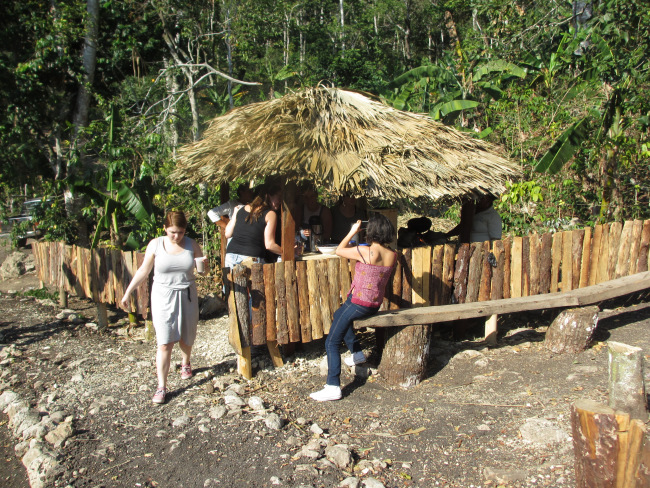
He then gestured towards a hut in the distance and mentioned how they would update it and then refurbish their office by replacing the zinc roof with the same thatched palm above our heads. They already had solar panels on some of the buildings. Mario spoke with such passion and it was clear that his comrades shared the same enthusiasm and dedication to their job and vision. This is their livelihood. While Mario spoke to us, via translator, a group of women ushered in and out of the room carrying large covered bowls. All at once, they were reveled to show us an honored feast. Delicious aromas of the piping hot Sancocho stew immediately wafted towards us and we were urged to grab a plate and a spoon.
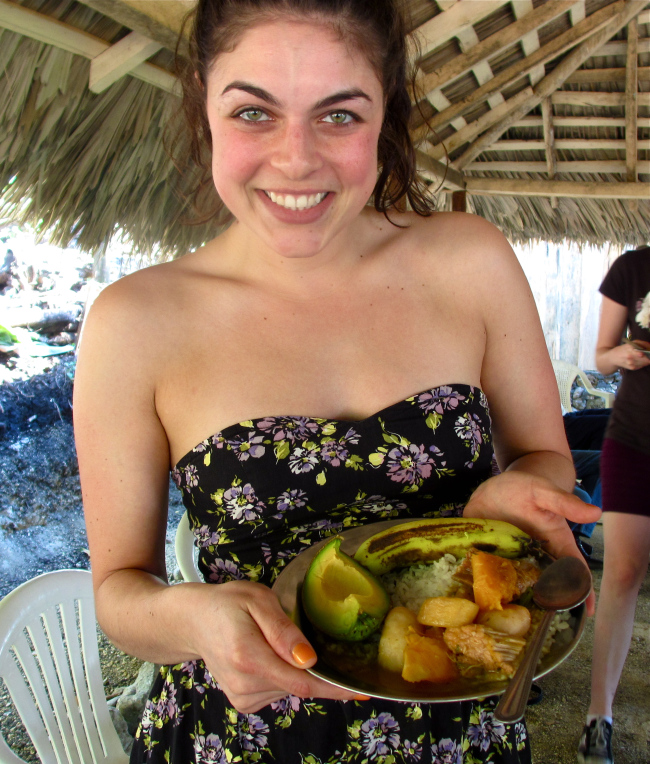
Sancocho is a specialty stew of the rural regions that is composed of plantains, root vegetables and as many different types of meat as possible. This one had Pork and chicken that had been wandering around the very farm only days before. We piled the stew on top of rice and cut up avocados freshly plucked from their trees as a topping. So here I am blissfully gobbling down my second plate of food, and I become vaguely aware through my focus on my plate that a woman has placed one more bowl of food next to me. TADIK!!! Well, apparently in this culture it is actually called Concon, or otherwise understood to Americans as the crunchy and salty rice left over at the bottom of the pot. I think I actually jumped for joy. This was the first of many moments throughout the meal that I was able to communicate with my hosts through my language barrier.

The next time I had a physical reaction to the meal was when the same woman brought out two gigantic jugs of freshly squeezed orange and coconut juice. I have a newfound obsession with coconut water and after seeing my enthusiasm they pulled out machetes and chopped up fresh coconuts for us to drink and eat from. As I attacked a coconut with my spoon, I noticed a few people staring and laughing good-naturedly at me. I think they found my fascination with their exotic staples comical and endearing.
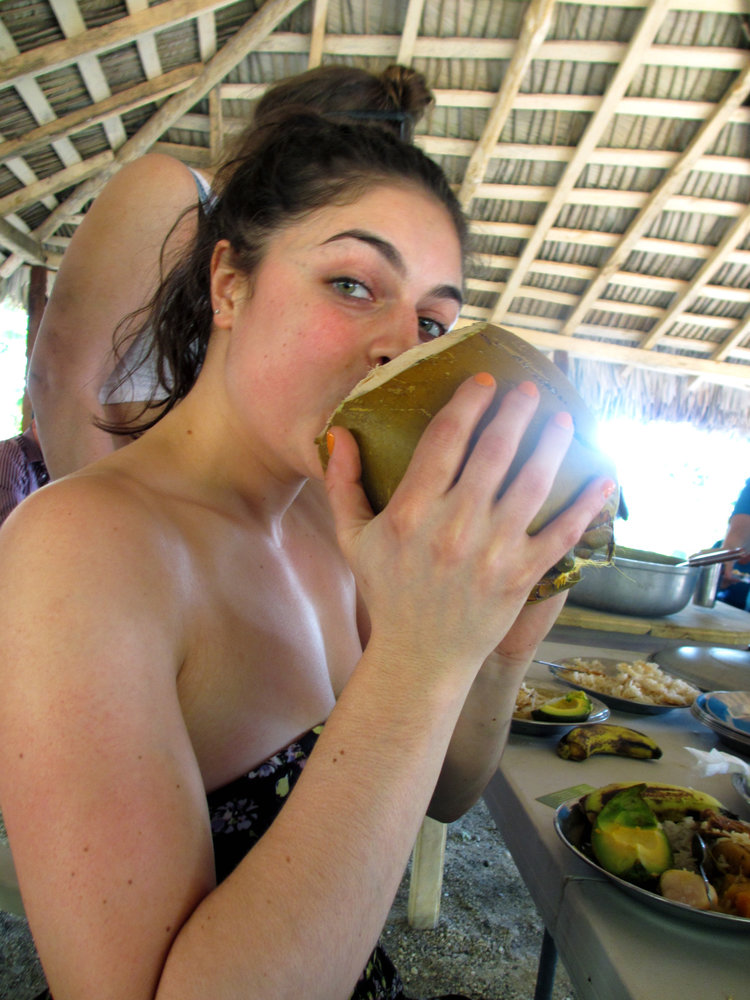
After lunch we got a tour of the plantation and an explanation of their growth strategies for avocados and coffee beans. It was interesting to learn about their sustainable growth practices for avocados. They utilize old tree stumps as a base due to their established and strong root system. The workers create small holes in the stump and plant new seeds, then after about a month they begin to prune the saplings. The very interesting part comes here; they take baby saplings and cut the bottom into a sliver, while simultaneously cutting a slit into the top of the rooted sapling. The worker then inserts the baby into the slit of the bigger sapling and secures them together with plastic wrapping. The plants grow into one another and create a hybrid. Due to this practice, the plantation is able to grow many varieties of different avocados at a very high yield, year-round.
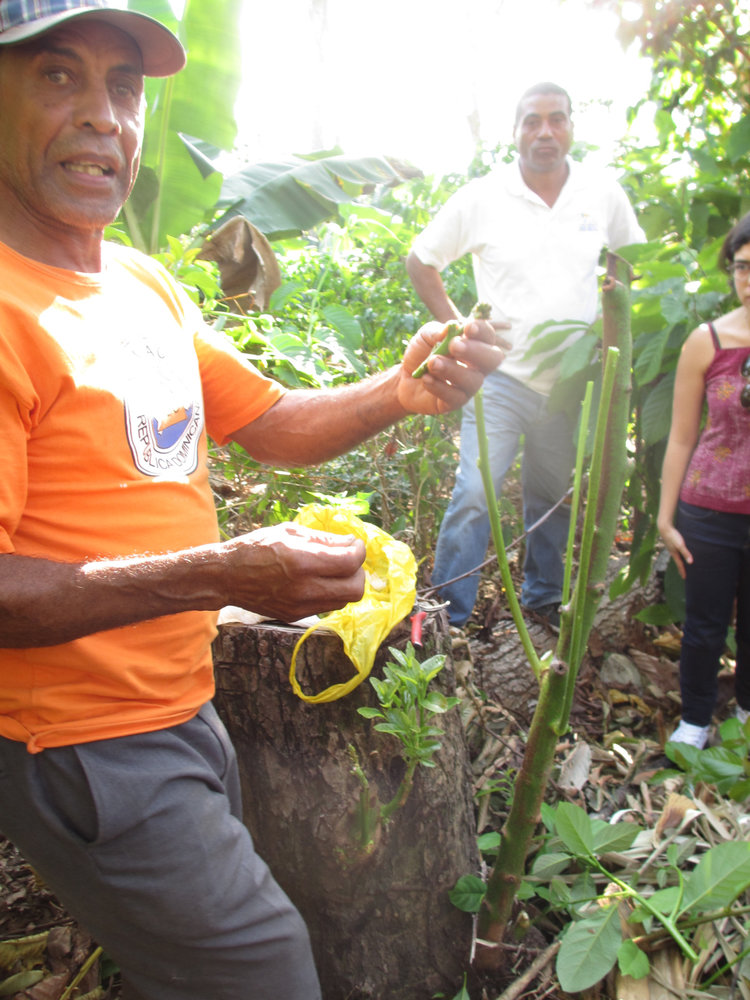
We also learned about their coffee from a man with a very long name but who instead insisted we simply call him Jesus. We subsequently got a coffee roasting/grinding demonstration and were handed large cups of fresh Dominican coffee. We headed back to the main Kiosk for a sweet dessert of mashed coconut with milk and sugar.
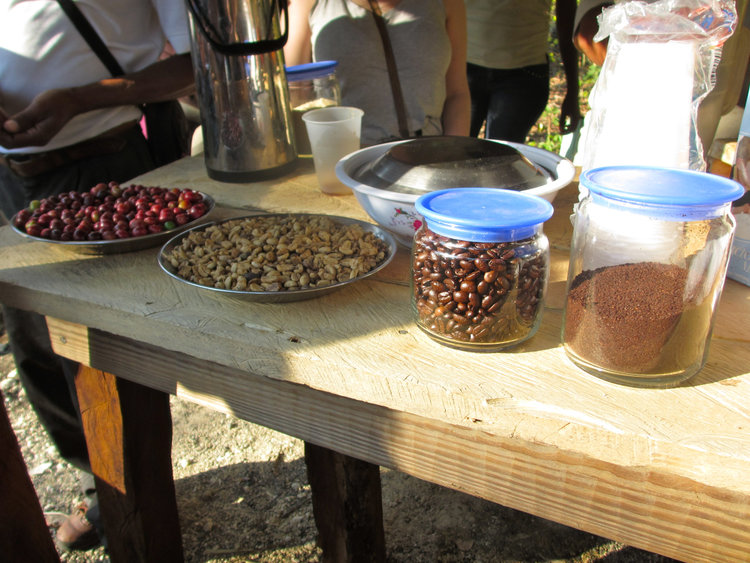
The afternoon culminated in a truck ride up to the pinnacle of the mountain for the views. Mind you, when we had arrived at the plantation earlier that morning we had been forced to transfer from our shuttle bus to the back of a pickup truck! The final climb to our destination had been too steep and rocky for a bus. Unlike some of my southern companions, I had not ever had this experience of sitting in the back of a truck, so I greatly enjoyed myself, even though it was cramped.

At the top of this mountain, Mario led us around the brush, yet again alive with excitement as he told us his plans to build a raised building that will serve coffee liquors and beers to enjoy with the accompanying 360 degree view of the land. Afterward he rode us back down the mountain to our bus. I never could have imagined that we could fit thirteen people, including my professor, the wife of our bus driver, and four strangers who didn’t speak any English, all into the confines of that little trunk during the bumpy ride. Mario wished us a good night and I gave him the customary kiss on the check with a heartfelt thank you. He then proceeded to give me the tightest and most genuine hug I have ever received.
I have never experienced such kind hospitality before in my life. Everyone I met today was so eager to educate and help us. They wanted us to feel as comfortable as possible and they went out of their way to provide us with every experience and honor that they could afford.
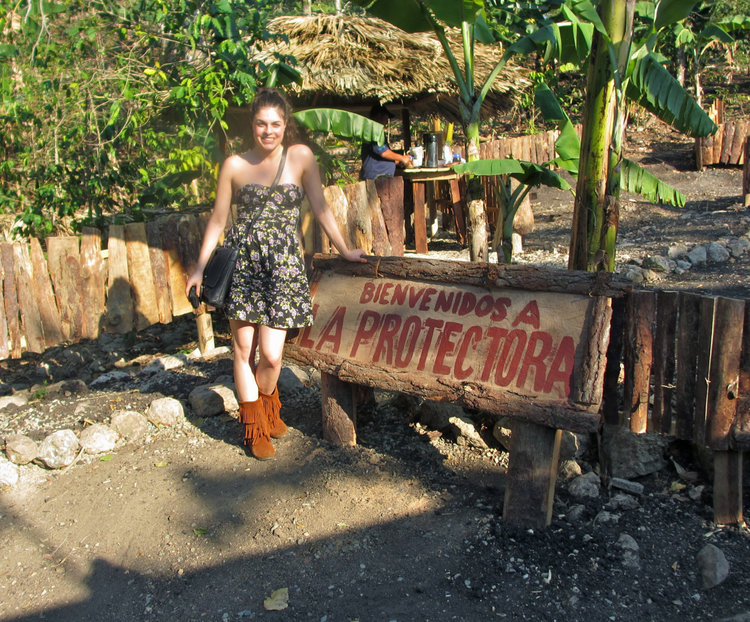
At the end of the night, we stopped at a tiny corner store to pick up some necessities. By necessities I mean Dominican rum, president beer, orange juice, and cigars. Aimee spoke quickly to the men at the counter before turning to translate to us saying “Ok guys, so they recommend this brand, and its really old you know so its really good…soo” And I’m standing here thinking oh wow she is going to try and convince us to splurge on this fancy alcohol I only have so much money! But then she goes “soo…its 350 pesos we should definitely get two!” We walked out of the store with our plastic bags in hand, two bottles of rum, a pack of beer, carton of cigars and two gallons of orange juice for the cost of about ten dollars.

At some point during the six hour bus ride today, I realized that the only time I feel truly at peace is when I am traveling and exploring outside of my comfort zone. So much of the time, I feel anxious and unsettled, as if I don’t quite fit with my surroundings. I feel unfulfilled and go through each day as a checklist, going through the motions of life and having all sorts of experiences, but they are really just a means to get to the next day and do it all over again. I made all of these goals to travel and my thinking at first was to do so because I am disenchanted with the mentality, goals, values and pace of life in New York City. I wanted to explore other areas of the world to learn how others live. It was a revelation for me the other day to walk along the pathways of a forest, soaking wet from cave diving with a warm breeze drying me off, and to realize that for once my mind wasn’t racing with thoughts. Normally, I am constantly moving, always talking, and have twenty different thoughts running through my mind at any given moment. I am always thinking ahead and planning for the future instead of living in the moment. But already in two days here, I feel like a completely different person. I am a better version of myself.
